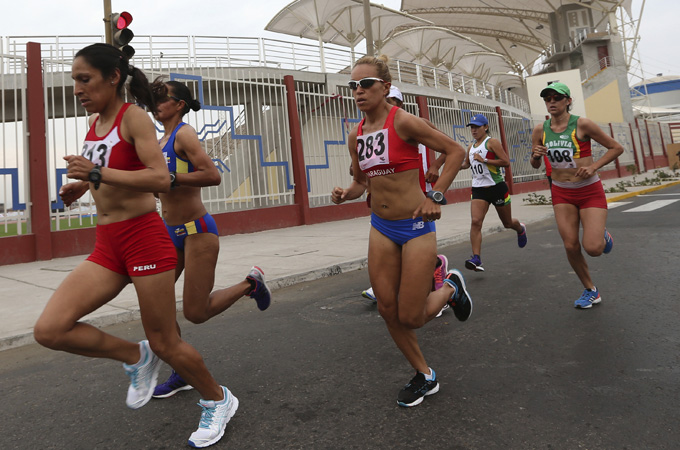
Why running is the most democratic sport
Can the sport erase gender and socio-economic differences, and bridge cultural gaps?
It is not necessarily easy to become a lifelong runner, but it can be simple. No other sport has lower entry barriers for the average person. That is not to ignore that many people find it difficult to stick with a running programme, or that from the outside, the sport’s most visible gatherings, road races, can look intimidating. But in most places around the world, being able to call yourself a runner is more a matter of motivation than economics, opportunities, or infrastructure.
“Running is the most accessible, and the cheapest, organised sport,” says Roger Robinson, a former world-class runner who is the sport’s leading historian. After all, the only real piece of equipment most runners find indispensable are good shoes. Despite the common view, there is no need for runners to have a special diet; the best diet for runners is the best diet for anyone interested in health, with lots of whole grains and fresh produce, and minimal processed foods. Organisationally, there are no membership fees, no leagues to join, no special facilities to travel to. As an old Nike ad put it, “the roads are always open”.
Runners, unlike soccer players, don't have to get picked for a team.
“The only other sport that belongs in this discussion is soccer,” says Peter Gambaccini, a veteran running journalist who writes for Runner’s World. But, he adds, “runners, unlike soccer players, don’t have to get picked for a team.”
In a world where scheduling dinner with a friend can take weeks, there is much to be said for running’s solitary possibilities in encouraging participation.
At the same time, one of running’s key virtues is how it easily bridges cultural, racial, socioeconomic, gender, age and other distinctions. Look at most group runs, and you will see people who otherwise might never have met, and who certainly would not spend hours together discussing everything from politics and pop culture to boyfriends and beer.
Comrades in sweat
That running is increasingly popular is undeniable. According to the Sports & Fitness Industry Association, more than 29 million Americans ran at least 50 days in 2012, and the National Sporting Goods Association says that more that nine million Americans ran on 110 or more days last year – both figures were up by about four percent over 2011.
There is similar growth in organised running. According to Running USA, the race industry trade group, there were 15.5 million finishers in US running events in 2012, and 26,370 such events were put on in that year; both were records.
Equivalent figures for other countries are more difficult to come by, but the explosion of large races around the world is one of running’s top trends. In 2012, the five largest races in the world were run in five countries – Australia, Spain, Germany, the US and Italy – each had more than 50,000 finishers.
When the official tallies are available for 2013, it is likely that some non-western races will have claimed some of the top spots. Counting entrants in all the races offered, from 5km on up to the marathon, more than 73,000 signed up for China’s Xiamen Marathon in January. India now has several races with fields of more than 20,000. The numbers are even more impressive when you consider that, for every runner at a race, there are several more quietly doing their thing at home. Running is also growing exponentially in countries such as Malaysia, United Arab Emirates, and the Philippines. Running travel companies are thriving, in part because runners know that wherever they land, they will be instantly welcomed by their comrades in sweat.
Adding to running’s democratic appeal is that the lines between a normal run and a race are blurring. “There really was a time when you had to be quite good to not come in last,” Gambaccini says. That is no longer the case. People run races for many reasons – personal challenge, peer solidarity, cause support, mobile vacation – besides trying to be first to the finish.
And it is good on two related fronts. “Now that so many people take part for reasons other than serious competition, running in organised races has become much more accessible and welcoming,” says Robinson. As a result, race fields look like society as a whole, with all age groups and body types represented. In which other sport do 72-year-old men regularly compete alongside 23-year-old women? And in which other sport can newcomers be on the field of play at the same time as the best in the world?
As a result, says Gambaccini, “becoming a lifelong runner is more of a possibility now. The average runner is more common and more socially acceptable, and he or she is not likely to burn out and get crippling injuries due to a drive to excel.”
Changing perceptions
A large part of running’s claim to being the most democratic sport is female participation. Within most people’s lifetimes, women runners have gone from being a rarity to the norm. In the US, for example, more than half of regular runners are women, and 56 percent of road race finishers in 2012 were female.
“Most of these women don’t give a hoot about who wins the race,” says Kathrine Switzer, the first official finisher of the Boston Marathon and the driving force behind the women’s marathon being added to the Olympics in 1984. “They are there for fun and the self-esteem and accomplishment that comes from covering a distance on their own two feet.”
 |
| A large part of running’s claim to being the most democratic sport is female participation [GALLO/GETTY] |
Outside of races, “Women see inspiration and example around them everywhere of older, heavier, slower women out running and having fun,” explains Switzer. This normalisation of a basic human activity can be transformative beyond the realm of sport, as women apply the confidence gained through running to their other endeavours.
In many places, significant barriers remain. “There are still huge myths about women ‘damaging’ themselves, about a reduction in their fertility, as well as their inherent weakness and inability in all things physical,” Switzer argues. “All over the world many people feel it is immodest and inappropriate for women to be in the world of sports, which traditionally has been a man’s domain.”
Elite women runners have been leaders in changing these perceptions. Kenyan and Ethiopian women are the best in the world. Their international achievements and, in some cases, resulting financial independence have altered attitudes in their traditionally male-dominated cultures.
That young women with access to poor or no facilities, from rural areas of East Africa can become Olympic and world champions points to another way in which running is the most democratic sport, namely, at the elite level. Switzer likes to tell the story of Kenyan Catherine Ndereba, who as a promising young runner was given the few shillings needed to enter a race, won a pair of running shoes there, and went on to break the world record in the marathon and win two Olympic silver medals in the event. The winner of October’s Chicago Marathon, Dennis Kimetto, was a subsistence farmer in Kenya until he decided to give running a try a few years ago. Now he is one of the fastest marathoners in history and, by Kenyan standards, wealthy.
Ndereba’s and Kimetto’s rags-to-riches stories are unique, but they illustrate that the path to becoming world-class is clearer in running than in any other sport. If you have the talent and the opportunity and willingness to develop that talent through thousands of miles of training, you will rise to the top. Contrast that with most of the athletes who will compete at the Winter Olympics in February, who come mostly from wealthy countries and require access to special facilities and expensive equipment.
A culture of openness
Many runners are concerned that some parts of their sport are becoming less accessible. Robinson worries that “the tendency for races in western countries to be owned by private entrepreneurs is increasing costs and turning running into an activity for the privileged upper-middle classes.”
| Why We Run – Extra |
Half marathon and marathon entry fees in the US usually top $100. Most runners in the world’s largest marathon, New York City, pay a $255 entry fee; factor in travel, lodging and meals, and race weekend expenses can easily exceed $2,000. Of course, there are many less-expensive races, and most runners can find ample events within a reasonable drive from home. But for many runners, the biggest races capture the imagination and serve as motivation in ways that more casual events cannot.
Runners are nothing if not self-reliant, and some are coming up with unconventional ways to keep running’s culture of openness thriving. First held in 2004 at Bushy Park in Teddington, England, parkrun is a free, weekly 5km race which was founded by Paul Sinton-Hewitt. He says the goal was “to do something for others and to create something that didn’t exist before while at the same time satisfying my wish that no one should ever need to pay to run 5km.” There are now weekly parkruns in eight countries, including Poland, Australia and South Africa.
In the US, what are being called ‘running tribes’ have formed, with young urbanites using social media to connect for planned and impromptu group runs. With names like NYC Bridge Runners in New York City and The November Project in Boston, the tribes are the latest evidence that running is a counterforce to the stratification that afflicts much of modern life.
Running offers a different vision: camaraderie through shared effort; non-violent mass gatherings that celebrate real individual accomplishments; a welcoming spirit that asks no questions except, “Would you like to get together for a few miles?”
Scott Douglas is editor of Runner’s World Newswire and author of several running books, including Advanced Marathoning.
Tweet your running experiences using the hashtag #WhyWeRun
